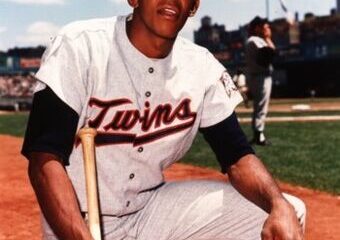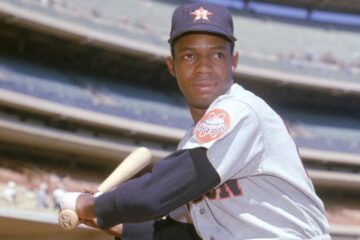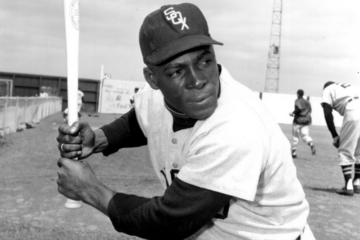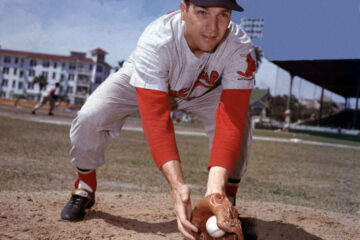The Hall of Fame Index: Who is the best left-hander of all time?
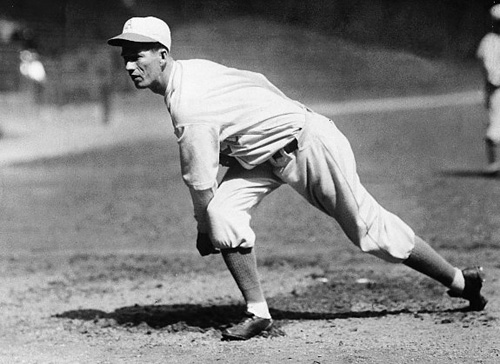
Baseball is rapidly approaching but we still have some time to have some fun. I didn’t classify pitchers by handedness in The Hall of Fame Index Part II. However, the debate over who is the best left-handed pitcher in baseball history is an interesting one. Most people would naturally assume the answer already and we will include all of the usual suspects. However, the process is important as well. This time around we will add a couple of tests in addition to the normal ones we include with the index.
Since most baseball historians marvel at the five year stretch that Sandy Koufax had, we will look at the pitching numbers for the best five year stretch for each pitcher. We will also look at the number of pitcher triple crown categories that the pitcher led in. One of the categories is wins and obviously we have had our fill with wins, but we will go ahead and lead off with that one.
| Wins | ERA | SO | Total | |
| Lefty Grove | 4 | 9 | 7 | 20 |
| Warren Spahn | 8 | 3 | 4 | 15 |
| Randy Johnson | 1 | 4 | 9 | 14 |
| Sandy Koufax | 3 | 5 | 4 | 12 |
| Steve Carlton | 4 | 1 | 5 | 10 |
If you had to pick one of those three that would be more important than the others you would pick ERA. Grove has won more ERA titles than any pitcher in history. Roger Clemens and Walter Johnson come closer than some of these folks and if we are going to enter Grove in a greatest pitcher of all-time competition he would get a lot stiffer competition.
Career Value
| BWAR | FWAR | WS/5 | Total | |
| Johnson | 101.1 | 108.4 | 65.2 | 274.7 |
| Grove | 106.7 | 84.4 | 78.2 | 269.3 |
| Carlton | 90.2 | 102.8 | 73.2 | 266.2 |
| Spahn | 100.1 | 81.8 | 82.4 | 264.3 |
| Koufax | 48.9 | 50.8 | 38.8 | 138.5 |
Obviously, Koufax sticks out like a sore thumb. The idea that Koufax is the best left hander in history is a boutique argument. You have to suspend disbelief for a second and consider them only when they are at their very best. The number of pitchers that have had brilliant seasons is a long one. The numbers of pitchers with multiple brilliant seasons is shorter, but it isn’t that short. The other four are fairly tightly bunched.
The index can give us some advice on a debate like this, but it was never designed to be a precise tool. It was meant to be a conversation starter and not an end to the conversation. We will want to look at the other numbers we normally look at. However, in order to start we need to clean up the index and include peak value.
Peak Value
| BWAR | FWAR | WS/5 | Total | Index | |
| Grove | 76.4 | 58.5 | 55.4 | 190.3 | 459.6 |
| Johnson | 71.1 | 63.4 | 42.6 | 177.1 | 451.8 |
| Spahn | 64.9 | 56.4 | 48.2 | 169.5 | 433.8 |
| Carlton | 52.1 | 60.8 | 43.4 | 156.3 | 422.5 |
| Koufax | 48.3 | 50.1 | 38.0 | 136.4 | 274.9 |
We see some shifting here, but really it is too close to call based on the index. I don’t feel comfortable calling a debate like this on the count of eight wins. That being said, we do begin to see some separation between Grove and Johnson and the rest of them. We will put them all through the ringer anyway to see how everything shakes out.
The interesting thing about the index is how different each of its components are in terms of pitchers. Win shares considers pitchers much less valuable, so they go more based on durability than the quality of those innings. WAR is more interested in quality. The combination gives us a decent cross-section of sabermetric thought.
Pitching Numbers
| Wins | PCT | ERA+ | WaaPCT | DIFF | |
| Grove | 300 | .680 | 148 | .619 | .061 |
| Johnson | 303 | .646 | 135 | .609 | .037 |
| Koufax | 165 | .655 | 131 | .577 | .078 |
| Spahn | 363 | .597 | 119 | .555 | .042 |
| Carlton | 329 | .574 | 115 | .554 | .020 |
Some people would replace Koufax here and include the likes of Eddie Plank and Tom Glavine. They are both 300 game winners, but when you look at numbers like ERA+ and WaaPCT. Grove is on top in both of those. So, when you compare him with how well he did against his contemporaries. Obviously, Grove pitched in a monochrome in environment, so no one is claiming he was a greater pitcher than of the others.
What we can say is that he was more dominant over the course of his career than the others. The first table might have demonstrated that as well. We see that Koufax looks a lot better when we look at aggregate numbers. We know his career was shortened by injuries, so let’s play the game of looking at only the top five seasons.
Five Year Numbers
| Wins | PCT | ERA+ | WaaPCT | Diff | |
| Grove | 128 | .795 | 172 | .638 | .157 |
| Koufax | 111 | .766 | 168 | .653 | .113 |
| Spahn | 106 | .639 | 117 | .538 | .101 |
| Johnson | 100 | .725 | 177 | .641 | .084 |
| Carlton | 93 | .646 | 131 | .604 | .042 |
We chose the best five year period in terms of victories. Spahn had other periods where he was more dominant in terms of preventing runs. However, just the fact that there wasn’t an obvious five year period for him shows the limitation of such a test. We are obviously cherry-picking in order to help out Koufax. Otherwise, it wouldn’t make any sense to add him to a list like this.
Still, Grove was better. He had a better ERA+ than Koufax, more wins, a better winning percentage, and won four ERA titles within those five seasons. What’s more, Johnson might have been better than both of them. He didn’t have the wins and winning percentage, but he has the ERA+ and obviously has the strikeouts as well.
Playoff Numbers
| W-L | INN | ERA | SO/BB | |
| Johnson | 7-9 | 121.0 | 3.50 | 132/32 |
| Carlton | 6-6 | 99.1 | 3.26 | 84/51 |
| Koufax | 4-3 | 57.0 | 0.95 | 61/11 |
| Spahn | 4-3 | 56.0 | 3.05 | 32/13 |
| Grove | 4-2 | 51.1 | 1.75 | 36/6 |
The folklore surrounding Koufax is something else and I love all the stories I can get my hands on. The big question here is how one loses three games with an 0.95 ERA? I haven’t been able to figure that out and it is Exhibit A as to the unimportance of wins and winning percentage. Pitchers don’t win and lose games. Teams win and lose games. I generally don’t like the quality start, but it is a lot more relevant than wins in this day and age.
None of these guys was bad in the postseason. Some numbers look better than others, but they are all well within the range of what they did over the course of a full career. Carlton’s strikeout to walk ratio is shaky and Johnson’s won-loss record is shaky but he also went up against pitchers that had better games. In a small sample size that tends to happen. You should get measured by how well you prevent runs and not whether someone else happened to do it better on that particular day.
Carlton and Johnson also had the benefit of league championship series and Johnson had divisional rounds as well. So, they had more opportunities overall. Had the other three had those additional rounds they may have built on their legends. It’s one of the reasons why we don’t put too much stock in playoff performance.
BWAR CY Young Points
| Top 10 | Top 5 | CY | PTS | |
| Grove | 0 | 5 | 8 | 105 |
| Johnson | 1 | 4 | 6 | 83 |
| Spahn | 2 | 10 | 1 | 66 |
| Koufax | 1 | 3 | 2 | 38 |
| Carlton | 4 | 1 | 2 | 37 |
There were no Cy Young awards when Grove pitched. Spahn had them towards the end of his career. The rest of them enjoyed Cy Young awards throughout their careers. WAR is not necessarily a perfect tool to judge Cy Young fitness, but when we look at his career we see that he won the most games four times, had nine ERA titles, five times had the best winning percentage, and seven strikeout crowns. It’s safe to say he would have won at least a few Cy Young awards.
Koufax and Spahn pitched at a time when only one award was given out. Had they pitched when an award was given for each league they would have won more than a few as well. So, all of these guys would have won multiple Cy Youngs. So, any guy you pick from this list is bound to be a good choice, but it is clear based on most evidence that Grove was the most dominant of these pitchers.


